Puffins of the Inner Hebrides – a photo essay | Environment
In Scotland, the much-loved puffin â€" or fachach in Gaelic â€" nests on the Treshnish Isles and Staffa in the Inner Hebrides. Outside of the breeding season they spend most of their lives at sea, resting on the waves when not swimming.
This distinctive seabird, famous for its stout patterned beak, flies thousands of miles in migration, can dive to more than 60 metres and live for more than 40 years.
Photographer Murdo MacLeod visited their breeding colony on the Scottish archipelago to learn more about the species.
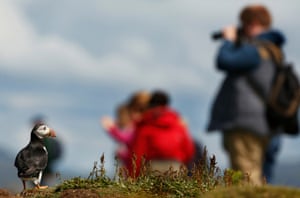

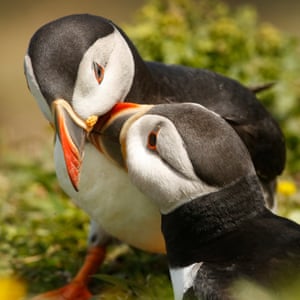
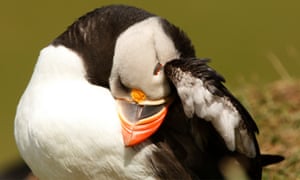
“Scotland’s fondness for the puffin goes right back,†says MacLeod. “I’m sure it’s rooted in cooking them in a dish as well, but there’s a gentle affection that’s hundreds or thousands of years old.â€
Puffin meat was an important part of the diet for islanders in remote places, such as St Kilda, where the seabird was sustainably harvested, cooked and added to porridge for breakfast in the 18th and 19th centuries. They were also collected for their feathers in the Victorian era.
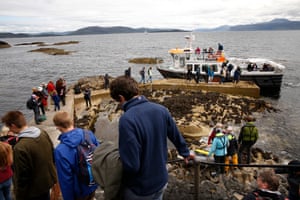


More recently, MacLeod’s generation has bonded with the popular seabird through the Puffin children’s books. “They had a Puffin club and you got a diary and we had all these Puffin-emblazoned stuff. There’s all that echo as well for a whole generation,†he says.
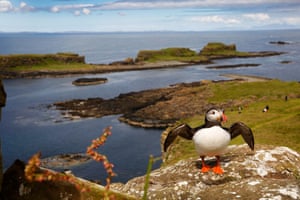
When MacLeod landed on the isle of Lunga, uninhabited since 1857, he was surprised to find a public footpath close to their burrows. The birds appeared to be relaxed and unintimidated by their human admirers.
“They are obviously very accustomed to it,†he says. As MacLeod quietly watched the birds, one young boy edged closer to the puffins and feigned sleep to see how close the curious birds would come.
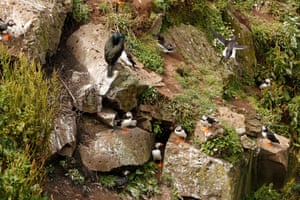
We warm to animals that remind us of ourselves, and puffins’ sociable breeding colonies adds to their appeal. “They take a peck at each other’s bills quite gently â€" I think it’s a kind of communication,†says MacLeod.
Puffins are well adapted for swimming in the ocean but are more awkward in the air, their wings buzzing like propellers and beating up to 400 times per minute.
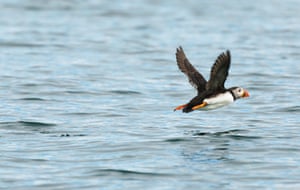
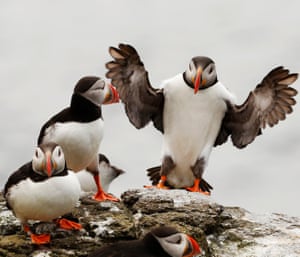
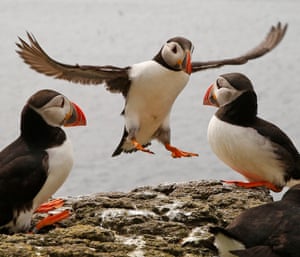
“When they come into land they really are clumsy flyers,†says MacLeod. “They are a bit like Donald Trump supporters in that respect. They accidentally body-slam each other all the time. They desperately need some air traffic control to help them.â€
MacLeod is drawn to the puffins’ enigmatic life beyond their colonies. “Once the breeding season is over, they spend nearly all their time at sea, singly or in pairs, bobbing about in the ocean,†he says.
“It seems an austere and mysterious existence, and then the breeding season comes about and from being nomads they become incredibly metropolitan â€" they all squabble together.â€
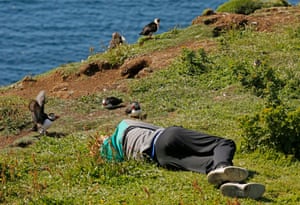
Environmentalists are working to save the species from inexorable decline. The world’s 11 million puffins are predicted to be 80% down by the second half of this century, according to a report. The species is suffering from a loss of the small fish â€" sand eels â€" on which they feed. Climate change appears to be the primary cause.
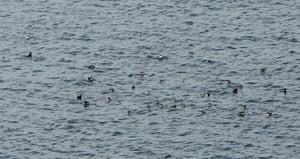

0 Response to "Puffins of the Inner Hebrides – a photo essay | Environment"
Posting Komentar